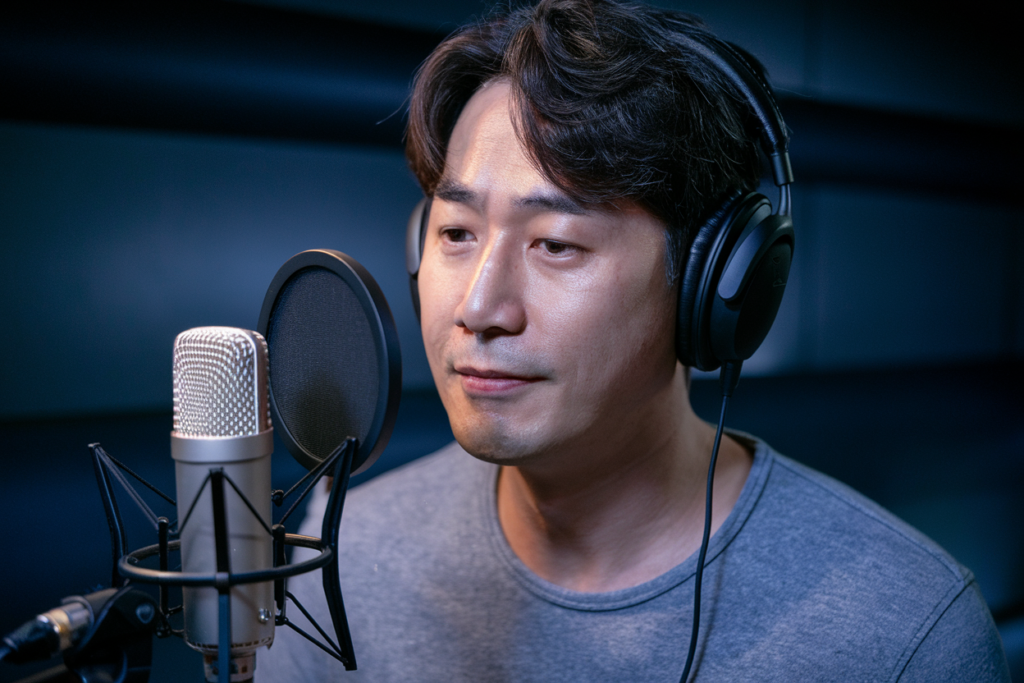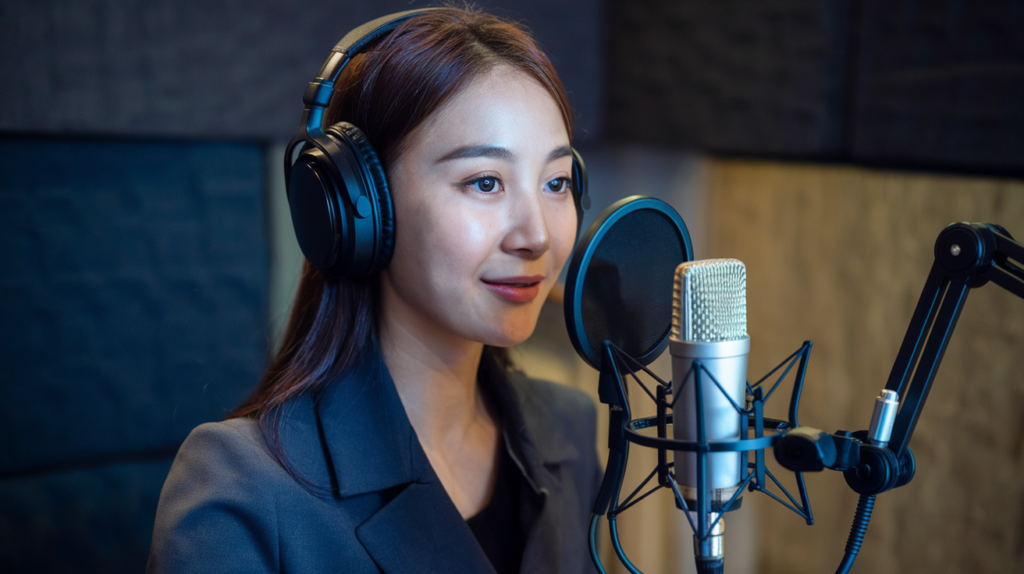Key Takeaways
- Lip Sync Fundamentals: Perfecting lip sync in Korean voiceovers involves more than just matching words; it requires understanding timing, emotion, and cultural nuances to create authentic connections with the audience.
- Significance of Accuracy: Accurate lip sync enhances storytelling by aligning voiceovers with character expressions, leading to better viewer engagement and emotional resonance.
- Challenges Faced by Voice Artists: Achieving perfect synchronization is complex due to variations in language rhythms, emotional delivery, and cultural nuances that require skillful modulation and adaptation.
- Effective Techniques: Utilizing timing adjustments and phonetic matching strategies are crucial for creating seamless synchronization that resonates emotionally with viewers.
- Utilization of Tools: Advanced software like Adobe Audition, Audacity, and AI-driven technologies facilitate efficient analysis and alignment of audio with visual cues for improved performance quality.
- Practice Tips: Regular practice with source material and employing effective recording techniques can significantly enhance a voice artist’s ability to achieve better lip sync accuracy.
Ever wondered how those captivating Korean voiceovers manage to sync perfectly with the characters’ lips? Perfecting lip sync in Korean voiceovers isn’t just about matching words; it’s an art that combines timing, emotion, and cultural nuances. If you’re diving into this world, you might feel overwhelmed by the challenge of making your voice match every flicker and movement.
Understanding Lip Sync in Voiceovers
Lip sync in voiceovers goes beyond merely matching words with mouth movements. It encompasses timing, emotional delivery, and cultural context to create a natural connection with the audience.
Importance of Lip Sync Accuracy
Accuracy in lip sync is crucial for effective storytelling. When your voiceover aligns seamlessly with the characters’ expressions, it enhances viewer engagement. Audiences are more likely to connect emotionally when they perceive authenticity. This connection can significantly impact how well the message resonates. Consider that precise synchronization can elevate even simple dialogues into memorable moments.
Challenges in Achieving Lip Sync
Achieving perfect lip sync presents several challenges for voice artists. First, understanding the source material’s pacing is essential; different languages may have varied rhythms and syllable counts. Second, capturing character emotions requires skillful modulation of tone and inflection—this isn’t just about what you say but how you say it. Finally, cultural nuances add another layer of complexity; local dialects or idiomatic expressions might not translate directly into other languages without losing their essence.
Navigating these obstacles takes experience and practice for any voice actor aiming to deliver high-quality work that feels authentic and relatable to audiences everywhere.
Techniques for Perfecting Lip Sync
Perfecting lip sync in Korean voiceovers requires a blend of skills and techniques that enhance the overall performance. Achieving seamless synchronization goes beyond just matching words; it’s about creating an authentic connection with the character.
Timing and Rhythm Adjustment
Timing plays a crucial role in lip syncing. You’ve got to match your delivery with the character’s mouth movements precisely. Start by listening to the original audio multiple times, focusing on how pauses and emphases align with visual cues. Adjust your pacing based on this analysis. If you notice certain phrases take longer or shorter, modify your speech accordingly. Practice repeating lines while watching the footage to find that sweet spot where your voice flows naturally alongside the visuals.
Phonetic Matching Strategies
Phonetic matching involves aligning sounds rather than just words. This technique is essential for capturing nuances in language and emotion. Pay close attention to specific phonemes that correspond with mouth shapes when speaking Korean. For instance, certain vowel sounds may require more lip movement than others—practice these articulations until they feel second nature. Recording yourself can help; playback allows you to assess alignment between what you’re saying and how it appears visually.
Combining these techniques not only improves your skills as a voice artist but also enhances viewer engagement through compelling performances that resonate emotionally with audiences.
Tools and Technology for Lip Sync
Perfecting lip sync in Korean voiceovers involves using the right tools and technology. These resources help streamline the process, making it easier for you as a voice artist to achieve seamless synchronization.
Software for Voiceover Artists
Numerous software programs cater specifically to voiceover artists. These applications often include features like waveform visualization, playback speed adjustment, and audio editing capabilities. Popular choices among professionals include:
- Adobe Audition: Offers advanced audio editing features that allow precise alignment of your voice with character movements.
- Audacity: A free tool that provides essential functions like cutting, copying, and pasting audio clips.
- Reaper: Known for its flexibility and customization options, making it suitable for various projects.
These tools enable you to analyze your recordings closely, ensuring that every syllable matches the corresponding mouth movement effectively.
Advances in AI and Lip Sync
Recent advancements in artificial intelligence have revolutionized lip sync technology. AI-driven tools can now analyze video frames alongside audio tracks more efficiently than ever before. This capability allows voice actors to focus on their delivery while the software assists in aligning speech to visuals accurately.
AI solutions can also generate phonetic maps based on original content. Such innovations simplify the syncing process by providing guidelines tailored specifically to languages like Korean. As these technologies continue evolving, they promise even greater accuracy and ease of use for voice talent aiming to enhance their performances.
Embracing these tools not only boosts your technical skills but also elevates your overall quality as a voiceover artist in an increasingly competitive landscape.
Tips for Voiceover Artists
Perfecting lip sync in Korean voiceovers requires a combination of skill and practice. Here are some essential tips to elevate your performance.
Practicing with Source Material
Practice makes perfect, especially when it comes to voiceovers. Start by selecting clips from the original source material that you’ll be working on. Watch these clips multiple times, paying close attention to character expressions and timing. Try mimicking the emotional tone and pacing of the original actors; this helps you capture nuances that resonate with audiences. As you rehearse, record yourself to identify areas for improvement. Listening back allows you to refine your delivery and ensure alignment with visual cues.
Recording Techniques for Better Sync
Recording techniques can significantly impact your ability to achieve better sync in your voiceovers. Use high-quality microphones that accurately capture your vocal nuances; this clarity enhances emotional delivery. When recording, focus on maintaining consistent mic distance to avoid fluctuations in volume. Additionally, consider using a pop filter to eliminate unwanted plosives that disrupt audio quality.
Timing is crucial during recording sessions as well. Aim for a natural flow that matches the rhythm of character dialogue while ensuring breath control doesn’t interfere with pacing. A good tip is to record in segments—this approach lets you concentrate on syncing specific phrases or emotions without overwhelming yourself.
By implementing these practices and techniques, you’re not just improving synchronization but also enhancing overall performance quality as a voice artist or actor in the competitive world of Korean voiceovers.
Conclusion
Perfecting lip sync in Korean voiceovers is a journey that requires dedication and skill. By understanding the nuances of timing emotional delivery and cultural context you can create performances that truly resonate with audiences. It’s not just about matching words to mouth movements; it’s about bringing characters to life.
Utilizing the right tools and technology will enhance your abilities while consistent practice will sharpen your skills. Always remember that every challenge you face is an opportunity for growth. Embrace these challenges as you refine your craft and elevate your work in this vibrant industry. Your commitment to mastering lip sync will ultimately lead to more engaging and memorable performances that captivate viewers.
Frequently Asked Questions
What is the significance of lip sync in Korean voiceovers?
Lip sync is crucial in Korean voiceovers as it ensures that spoken words match character movements, enhancing viewer engagement and emotional connection. Accurate synchronization helps deliver compelling storytelling and makes dialogues memorable.
What challenges do voice artists face in achieving perfect lip sync?
Voice artists often struggle with understanding the pacing of source material, capturing emotions through tone modulation, and navigating cultural nuances. These challenges can be overwhelming but require practice and experience to overcome.
How can voice artists improve their lip-syncing skills?
To improve lip-syncing skills, voice artists should listen to original audio multiple times, analyze pauses and emphases, and practice aligning speech with visuals. Also, mastering phonetic matching techniques specific to the Korean language is essential.
What tools are recommended for perfecting lip sync?
Software programs like Adobe Audition, Audacity, and Reaper are recommended for precise alignment of voice with character movements. Recent advancements in AI also provide tools that simplify syncing processes by generating phonetic maps tailored to languages like Korean.
What practical tips can help enhance synchronization for voice actors?
Voice actors should select clips from original works for practice, mimic emotional tones, and record themselves to identify improvement areas. Using high-quality microphones and recording in segments can further enhance synchronization quality during performance.







